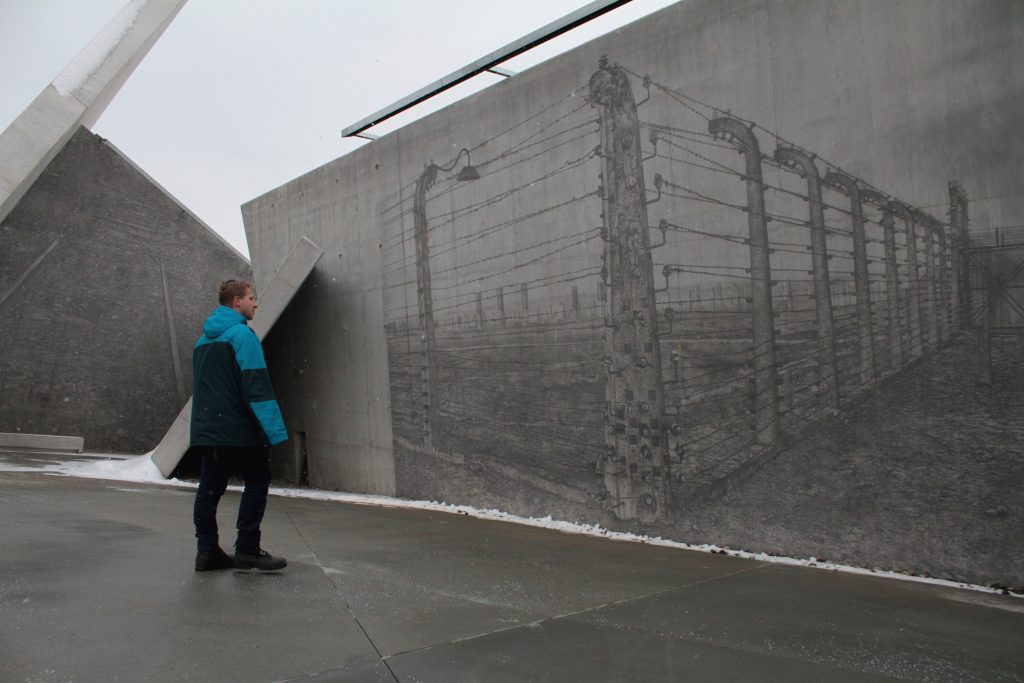National Holocaust Memorial’s maintenance improves year-round visibility
By Sissi De Flaviis
The National Holocaust Monument re-opened in mid-January after it was closed to the public for about a week to allow for the installation of heat trace cables and hydronic snow-melting equipment to winterize the memorial to the millions who died in Second World War-era Europe.
Many people were surprised to find the monument closed after federal Minister of Heritage Mèlanie Joly had reversed an earlier plan to close the LeBreton Flats commemorative site for the winter by announcing that it would, instead, remain open year-round.
But the monument’s closure earlier this month lasted just over a week. The shutdown was required to avoid damage from snow-clearing procedures and to install the new equipment.
NCC spokesperson Jean Wolff said the NCC has installed the heat trace cables in some of the storm water outlets to “maximize drainage during the winter’s freeze and thaw periods.”
An early design of the monument included winterization equipment, but those plans were eventually altered to keep the project on budget. According to Wolff, the recently installed drainage and hydronic snow-melting system is different from the original plan.
He said snow and ice clearance will improve access for visitors, who will be able to see the interpretation panels and views of the murals in the monument throughout the winter months.
The monument is located on LeBreton Flats near the intersection of Wellington and Booth streets, across from the Canadian War Museum. It has two entrances for pedestrians: a staircase, which will still remain closed during the winter, and a ramp, which will remain open.
Both entrances lead to the walk-through portion of the monument, which includes a gathering space with 13 plaques and six murals. The walk-through section will be closed after dark, but the outside will be illuminated in the evening.
Richard Clark, associate director of communication for the Centre for Israel and Jewish Affairs on O’Connor Street, said it’s important the monument remains open year-round to increase its visibility.
“It is important that the memory of the Holocaust is not forgotten, so it needs to be open and available,” he said. “It is a great thing that it will be open, especially considering how long our winter is here,” Clark said.
Before the monument opened in September, Canada was the only western country without a national Holocaust memorial.
“We are at a point in time where the Holocaust survivor population is starting to dwindle and it is on all of us to ensure future generations become witnesses to the lasting memories,” said Clark.
Apart from the short-lived controversy over access to the monument in winter, in September many visitors noticed that a prominent plaque at the site failed to directly mention Jewish victims of the Holocaust. The federal government later acknowledged an error had been made and said that it would be rectified.
Eyal Podolsky, 21, president of Hillel Ottawa — a group that serves the city’s Jewish university students — said it is important to continually remind people that Jews were a primary target of the Holocaust, something he fears people might forget in future years.
“This memorial is acknowledging what happened and the history, which is very important,” he said.
The updated plaque will be installed this spring and recognize Nazi Germany’s organized mass murder of Jews, Jehovah’s Witnesses, homosexuals, disabled people and others.
Seen from above, the monument depicts a stylized Star of David in memory of the six million Jewish people who died during the Holocaust.
“It reminds anybody who visits of the dangers of unchecked evil and the cost of silence at the face of anti-Semitism, and all forms of hate,” Clark said.
According to Wolff, people are deeply touched by the new landmark, the largest monument erected in Ottawa since the inauguration of the National War Memorial in 1939.
Sissi De Flaviis, Centretown News.

